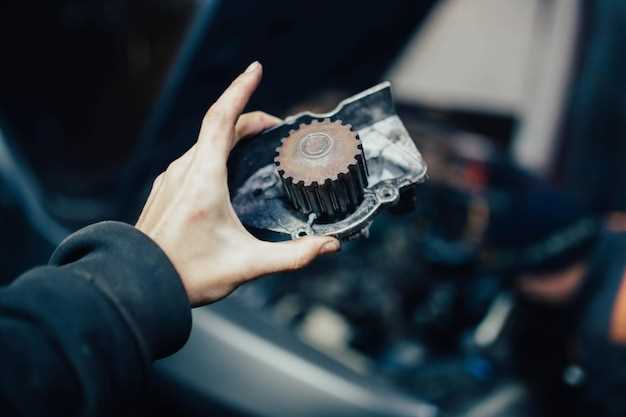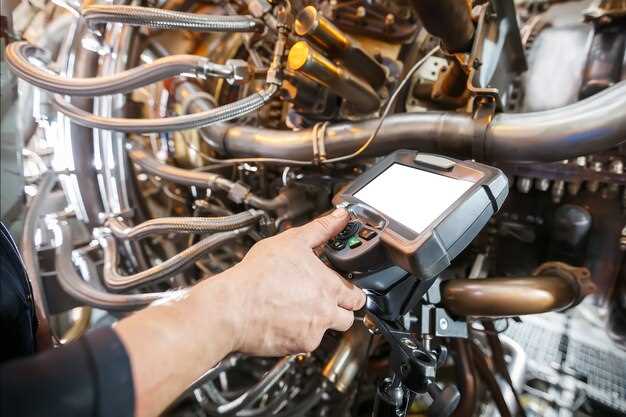
When it comes to maximizing your vehicle’s potential, the transmission plays a crucial role. This complex system is responsible for transferring power from the engine to the wheels, directly influencing acceleration, fuel efficiency, and overall driving dynamics. Upgrading your transmission can lead to remarkable improvements in performance, allowing you to experience a more responsive and engaging ride.
Modern vehicles come equipped with a variety of transmission options, including automatic, manual, and continuously variable transmissions (CVT). Each type has its own advantages, but as technology evolves, so do the opportunities for enhancing their performance. Upgrading your transmission may involve various approaches, from tuning software to complete rebuilds or swaps, each designed to optimize performance based on your driving style and preferences.
A well-upgraded transmission not only improves acceleration but can also enhance the durability and longevity of your vehicle. By investing in high-quality components and advanced technologies, you can ensure that your transmission is not only more efficient but also better equipped to handle increased power and torque from modified engines. In this article, we will delve deeper into the methods and benefits of upgrading your transmission for a superior driving experience.
Choosing the Right Transmission Type for Your Vehicle
One of the most critical decisions when considering an upgrade is choosing the right transmission type for your vehicle. The transmission is essential for converting engine power into motion and impacts overall performance, fuel efficiency, and drivability. There are primarily three types of transmissions: manual, automatic, and continuously variable transmission (CVT).
Manual Transmission is favored by driving enthusiasts looking for a more engaging experience. It offers direct control over gear selection and can provide better performance in specific circumstances. However, driving a manual can be challenging in heavy traffic and may not be ideal for everyone.
Automatic Transmission is the most common choice for everyday drivers, delivering convenience and ease of use. Modern automatics have significantly improved in efficiency and performance, often incorporating advanced technologies like dual-clutch systems. An upgrade to a high-quality automatic can enhance your vehicle’s responsiveness and overall driving experience.
Continuously Variable Transmission (CVT) offers a different approach. It provides an infinite range of gear ratios, allowing the engine to operate at optimum RPMs for better fuel efficiency. While some drivers appreciate the smoothness of a CVT, others may find the driving feel less engaging compared to manual or traditional automatic transmissions.
When deciding on an upgrade, consider factors such as driving style, terrain, and how you plan to use your vehicle. Each transmission type has its benefits and drawbacks, so it’s essential to evaluate your priorities and choose the one that aligns with your performance goals.
Ultimately, the right transmission type can significantly enhance your vehicle’s performance and tailor your driving experience, ensuring it meets your specific needs.
Key Components to Consider When Upgrading
When planning to upgrade your vehicle’s transmission, several essential components should be considered to ensure optimal performance and reliability. These components not only enhance the driving experience but also improve overall efficiency.
1. Transmission Type: The primary decision is whether to upgrade to a manual or automatic transmission. Each type has its advantages, with manuals offering greater control and automatics providing convenience and ease of use. Assess your driving style to choose the best fit.
2. Transmission Fluid: Upgrading transmission fluid can significantly impact performance. High-quality fluids reduce friction, improve shifting smoothness, and enhance heat resistance. Always consult the manufacturer’s specifications to select the right fluid type.
3. Torque Converter: A high-performance torque converter can maximize power transfer from the engine to the transmission. Upgrading to a converter with a higher stall speed can improve acceleration and responsiveness, especially for modified engines.
4. Gearing Ratios: Altering the gearing ratios during an upgrade can enhance acceleration and top speed. Shorter gears improve acceleration, while longer gears can enhance fuel efficiency at highway speeds. Choose ratios that suit your performance goals.
5. Valve Body: An upgraded valve body facilitates quicker shifts and improves transmission response. It plays a crucial role in managing fluid flow and pressure, making it a key component in any serious upgrade.
6. Clutch Packs: For manual transmissions, upgrading to high-performance clutch packs is essential for handling increased power. These components must withstand higher load and heat levels during aggressive driving.
7. Cooler Systems: Installing a dedicated transmission cooler can prevent overheating, especially during high-performance driving. An efficient cooler prolongs transmission life and maintains performance under stress.
Each of these components contributes to a successful transmission upgrade. By carefully selecting and implementing these elements, you can achieve significant enhancements in your vehicle’s performance and reliability.
Step-by-Step Process for Transmission Installation

Installing a new transmission can significantly enhance your vehicle’s performance. Follow these steps for a smooth installation process.
-
Gather Necessary Tools and Materials
- Socket set
- Wrenches
- Transmission jack
- Torque wrench
- Fluid for new transmission
- Gasket or sealant
-
Prepare the Vehicle
- Park the vehicle on a level surface.
- Disconnect the battery to avoid electrical shorts.
- Lift the vehicle using a jack and secure it with jack stands.
-
Remove the Old Transmission
- Drain the transmission fluid into a suitable container.
- Unbolt the drive shaft from the transmission.
- Disconnect electrical connections and hoses attached to the transmission.
- Remove the transmission mounts and support the old transmission with a jack.
- Carefully slide the old transmission out of the vehicle.
-
Install the New Transmission
- Align the new transmission with the engine and transmission mounts.
- Slide the new transmission into place while ensuring it mates properly with the engine.
- Reattach the transmission mounts and torque to specifications.
- Reconnect all electrical connections and hoses.
- Reattach the drive shaft and ensure it is secure.
-
Refill Transmission Fluid
- Add the recommended type and amount of transmission fluid.
- Start the vehicle and let it run for a few minutes to circulate the fluid.
- Check the fluid level and add more if necessary.
-
Test Drive
- Take the vehicle for a short test drive.
- Listen for any unusual noises and ensure smooth shifting.
- Check for leaks under the vehicle after the test drive.
By following these steps, you can successfully install your new transmission and enjoy enhanced performance in your vehicle.
Tuning Your Engine to Match New Transmission Specs
Upgrading your transmission is a significant step towards enhancing your vehicle’s performance. However, it’s crucial to ensure that your engine is also tuned to match the new transmission specs for optimal efficiency and power output. This process involves adjusting various parameters and components of your engine to work in harmony with the upgraded transmission.
First, you need to recalibrate your engine’s control unit (ECU). The ECU manages fuel injection, air intake, and ignition timing, all of which can be affected by a new transmission. By upgrading the ECU mapping to accommodate the new gear ratios, you can enhance throttle response and overall engine performance.
Next, consider upgrading your engine’s fuel delivery system. An upgraded transmission may result in different power demands, which can require a more efficient fuel system to deliver the required amount of fuel at higher RPMs. Options include installing larger fuel injectors and upgrading the fuel pump.
Additionally, it is essential to assess your engine’s airflow system. A new transmission may enable your engine to reach higher RPMs more quickly. Upgrading the intake and exhaust systems can improve airflow, thus increasing horsepower and torque. Performance air filters and more efficient exhaust headers can be beneficial in this regard.
Lastly, tuning your ignition timing is critical. Adjusting the timing allows your engine to burn fuel more efficiently, maximizing power output and ensuring smoother acceleration with the upgraded transmission. A specialized tuning software can help you achieve the precise settings needed for optimal performance.
| Component | Upgrade Recommendation |
|---|---|
| ECU | Recalibrate with new transmission specs |
| Fuel System | Install larger injectors and pump |
| Airflow System | Upgrade intake and exhaust components |
| Ignition Timing | Tune for improved efficiency |
By ensuring that your engine is effectively tuned to match the specs of your new transmission, you can unlock the full potential of your vehicle’s performance. This comprehensive approach to upgrading ensures that every component works synergistically, leading to a smoother, more powerful driving experience.
Common Mistakes to Avoid During Transmission Upgrades

Upgrading your transmission can significantly improve your vehicle’s performance, but it’s crucial to avoid common pitfalls that can lead to costly mistakes. One major mistake is failing to research compatibility. Not all transmissions work seamlessly with every engine type or vehicle model. Ensure that the new transmission is specifically designed to fit your car’s specifications.
Another common error is neglecting the quality of the components. Investing in a high-quality transmission can save you from future issues. Cheap parts may seem appealing upfront but can lead to premature wear or failure, compromising the performance you were aiming for.
Overlooking the importance of professional installation is equally detrimental. An improperly installed transmission can cause many problems, from drivability issues to complete transmission failure. Seek a qualified technician with experience in transmission upgrades to ensure everything is done correctly.
Moreover, failing to consider the necessary upgrades to other related components–like the cooling system, driveshaft, or differential–can hinder the overall performance gains you expect. If your transmission output is significantly increased, other parts must also be capable of handling that power.
Lastly, don’t underestimate the value of testing and tuning after the upgrade. A transmission may require adjustments to optimize performance. Neglecting this step can leave your vehicle performing below its potential, undermining your investment.
Measuring Performance Gains After Upgrading
After upgrading your transmission, it is crucial to quantify the performance improvements to ensure you are receiving the benefits of the modifications. Several metrics can be used to evaluate these gains effectively.
Firstly, start by assessing acceleration times. Use a stopwatch or a smartphone app to record the time it takes for your vehicle to reach specific speed benchmarks, such as 0 to 60 mph. A significant reduction in time indicates that the upgraded transmission is enhancing power delivery and responsiveness.
Next, analyze your vehicle’s fuel efficiency. Track fuel consumption over a set distance before and after the upgrade. An increase in miles per gallon can signify that the new transmission optimizes engine performance, leading to better fuel economy.
Another important aspect to measure is the engine RPM at various speeds. Using a tachometer, monitor any changes in RPM that occur after the upgrade. Efficient transmission systems often allow for lower RPMs at cruising speeds, reducing engine strain and improving overall performance.
Finally, consider gathering data from an OBD-II scanner, which can provide real-time feedback on various engine parameters. Comparing data points before and after the upgrade can give insights into how the transmission is affecting engine performance and vehicle dynamics.
In summary, systematically measuring acceleration, fuel efficiency, RPMs, and utilizing diagnostic tools will provide a comprehensive view of the performance gains achieved after upgrading your transmission.




